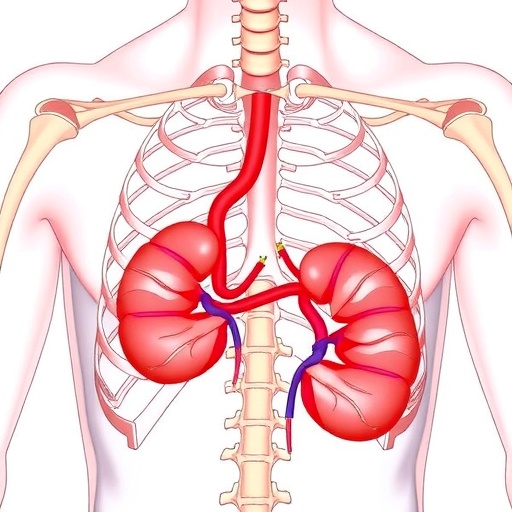China’s economy has shifted from a stage of high growth to a stage of high-quality development, and the establishment of a dual-carbon target requires profound changes in the industrial structure and energy systems, as well as finding the right direction and pathway for industrial adjustment. While the potential for technological emission reduction continues to be released, the main factor affecting China’s carbon emissions is the speed and intensity of economic transformation and industrial restructuring.
![]()
Credit: Energy and Climate Management, Tsinghua University Press
China’s economy has shifted from a stage of high growth to a stage of high-quality development, and the establishment of a dual-carbon target requires profound changes in the industrial structure and energy systems, as well as finding the right direction and pathway for industrial adjustment. While the potential for technological emission reduction continues to be released, the main factor affecting China’s carbon emissions is the speed and intensity of economic transformation and industrial restructuring.
A research team of Dr. GU Alun from Tsinghua University in Beijing, China, recently analyzed the correlations between greenhouse gas emissions due to differences in industrial divisions between provinces at the time and regional scales, which helped to better understand and analyze the patterns and relationships between provincial value chains and the formation of industrial chains. In addition to CO2 emissions from fossil-fuel combustion, they also considered the distribution of non-CO2 emissions.
The team published their research results in Energy and Climate Management on April 18, 2024.
“In the context of the economic transformation and development strategy, the economic development and interaction between regions and provinces will also carry an increasing flow of GHG emissions, and some provinces may transfer the production of energy-intensive products to other provinces through product flows with other provinces to achieve their carbon emission reduction targets, which poses a challenge to the realization of China’s overall dual-carbon targets. Therefore, it is necessary to pay attention to the GHG emissions of each province in China and analyze the degree of correlation of economic development between provinces and the relationship of emissions in the inter-provincial value chain in conjunction with the national value chain, so as to better understand the patterns and relationships of GHG emissions implied in the formation of inter-provincial value chains and industrial chains”. said GU Alun, senior author of the paper, associate researcher in the Energy, Environment and Economy Institute at Tsinghua University.
China’s domestic value chains have been gradually strengthened in recent years, and the resilience of the domestic economy has been further improved. The inter-provincial value chain has a relatively low degree of correlation, and each province still relies heavily on its own province for the inputs and distribution and use of intermediate products. The national average inter-provincial correlation of intermediates in 2017 was 25.34%, while the national average correlation of intermediates coming from its own province was 69.16%, much higher than the inter-provincial correlation of intermediates. The main value added gains of each province still come mainly from the formation of national value chains, and the domestic economy is more resilient.
From 2012 to 2017, the phenomenon of inter-provincial value chain emissions transfers became increasingly evident. Value chains in Beijing, Tianjin, Shanghai and Guangdong Province caused relatively high local emissions in other provinces, in contrast to the provinces of Henan, Jiangsu, Zhejiang and Hebei, where the net transfer of value chain emissions was larger in the North China region. From 2012 to 2017, the trend of inter-provincial value chain emissions transfer has been deepening, and is more pronounced in provinces such as Shanxi and Hebei (Figure).
There is less inter-provincial movement of non-CO2 emissions, but there are still signs of a growing shift in movement and a more decentralized shift, with mainly the western region providing more non-CO2 value-added emissions to the south-eastern coastal provinces
Some industries with high value chain emissions have production processes that pull emissions not only from other industries in the province, but also from local emissions in other provinces; some industries with high emissions from production in the province also raise their local emissions as a result of increased value added in other provinces and industries.
The research team expects guiding Beijing, Tianjin and developed coastal regions to make full use of the resources of both the international and domestic markets and, while participating in the global value chain, to continuously enhance their participation in the construction of domestic inter-provincial value chains, in particular to strengthen the participation of the tertiary industry, which is less carbon-intensive but has greater demand from the national economy, in the national value chain. In central and western provinces, industries and value chains can be developed according to different resource endowment advantages, high energy-consuming and low-yield production capacity can be phased out, and advanced technology and experience can be introduced to continuously strengthen and enhance local core competitiveness.
This work was supported by the National Natural Science Foundation of China (72140003).
About Energy and Climate Management
Managing the changing climate and energy transition are two closely related scientific and policy challenges of our society. Energy and Climate Management is an open access, peer-reviewed scholarly, policy-oriented academic journal dedicated to publishing interdisciplinary scientific papers on cutting-edge research on contemporary energy and climate management analysis. The Journal is exclusively available via SciOpen and aims to incentivize a meaningful dialogue between academics, think tanks, and public authorities worldwide. Contributions are welcomed covering areas related to energy and climate management, especially policy, economics, governance, and finance. Online submission portal available at https://mc03.manuscriptcentral.com/jecm.
About SciOpen
SciOpen is a professional open access resource for discovery of scientific and technical content published by the Tsinghua University Press and its publishing partners, providing the scholarly publishing community with innovative technology and market-leading capabilities. SciOpen provides end-to-end services across manuscript submission, peer review, content hosting, analytics, and identity management and expert advice to ensure each journal’s development by offering a range of options across all functions as Journal Layout, Production Services, Editorial Services, Marketing and Promotions, Online Functionality, etc. By digitalizing the publishing process, SciOpen widens the reach, deepens the impact, and accelerates the exchange of ideas.
Journal
Energy and Climate Management
DOI
10.26599/ECM.2024.9400001
Article Title
Tracking greenhouse gas emissions in Chinese value chains with an interprovincial input–output model
Article Publication Date
18-Apr-2024





